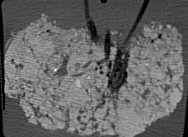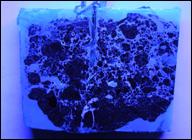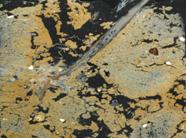
Saturday, 15 July 2006
136-27
Quantification of the Effects of Cereal Root Anchorage Failure Using X-ray Computed Tomography and Image Analysis.
Cereal root anchorage failure, or lodging (flattening of cereal crops), reduces grain yields and quality worldwide. The predominant form, root lodging, occurs following failure of the root-soil complex. Formulated models have been successful in predicting lodging although deficiencies have been identified. The precise mechanism by which the root-soil complex fails has been largely over-looked mainly due to difficulties in observation. Previous studies have always disturbed the soil, e.g. by using a trenching method, to investigate the mechanism of anchorage failure. This project aimed to examine and quantify the effects of lodging on undisturbed root-soil structures following observations at several scales. Replicated field experiments were established to examine soil, crop species and seed rate treatment effects. The research was divided into three areas; the development of methods for soil-root structural visualisation, quantification of the root-soil complex and the subsequent modelling of anchorage failure. A rapid method for the undisturbed sampling and visualisation of root-soil structures was developed using water-based varnish as a field structure preservative. From this, impregnated blocks were examined at the macroscale (approx 100 mm)(using X-ray Computed Tomography); mesoscale (approx 50 mm)(using polished blocks and digital image processing) and microscale (approx 5 mm)(using microscopy of thin sections) (Figure 1). Results from image analysis illustrated that barley does root lodge (the general perception of the farming industry is that barley only stem lodges) and that the lodging mechanisms hypothesised for wheat, appear similar for barley, particularly in terms of the suggested root-soil structure movement. The effect of rotation of the below ground part of the stem (subterranean stem), not previously considered, and subsequently anchorage root movement created a significant increase in porosity and pore size at the macroscale, in turn, creating a significant decrease in intra-aggregate porosity at the microscale, although this effect was dependent on soil texture. No significant effects were observed between the different crop types and seed densities at any level. Given the contrast between these treatments this was surprising, although one possible reason was the considerable heterogeneity in porosity exhibited by each soil type, and as such, only treatment effects that were highly significant were not masked by the natural heterogeneity of the soil. Our quantified data suggests that the subterranean stem has an important influence on crop anchorage failure and should be considered in future studies. The work also demonstrated that roots disturb regions of soil that are consistent with previous anchorage models, although the level of soil disturbance was less than most model predictions. These data are currently being used to develop soil manipulation strategies, such as increasing bulk density adjacent to the plant stem, to try combat the effects of lodging.
Figure 1 : An example of the scales of observation utilised in this project including:
a) X-ray Computed Tomography b) Impregnated Soil Blocks c)Thin Sections
Area of subterranean stem disturbance Area of subterranean stem disturbance ![]()


![]()
|
(Macroscale c. 110 mm) (Mesoscale c. 75 mm) (Microscale c. 5 mm)
Back to 2.1A Soil Structuring as a Dynamic Process and Particles Transfer - Poster
Back to WCSS
Back to The 18th World Congress of Soil Science (July 9-15, 2006)


